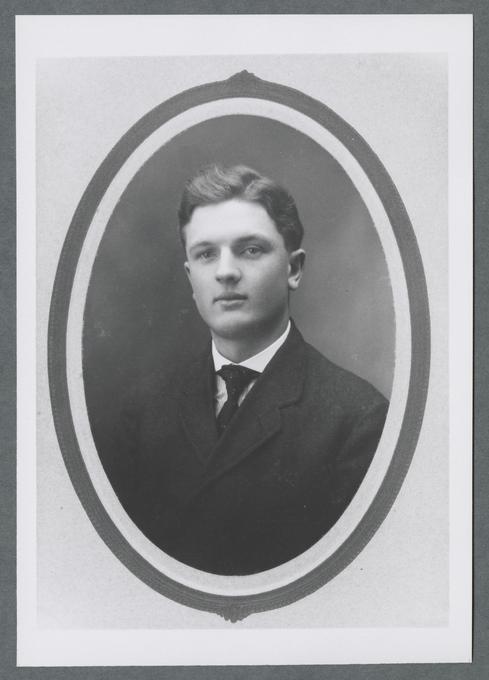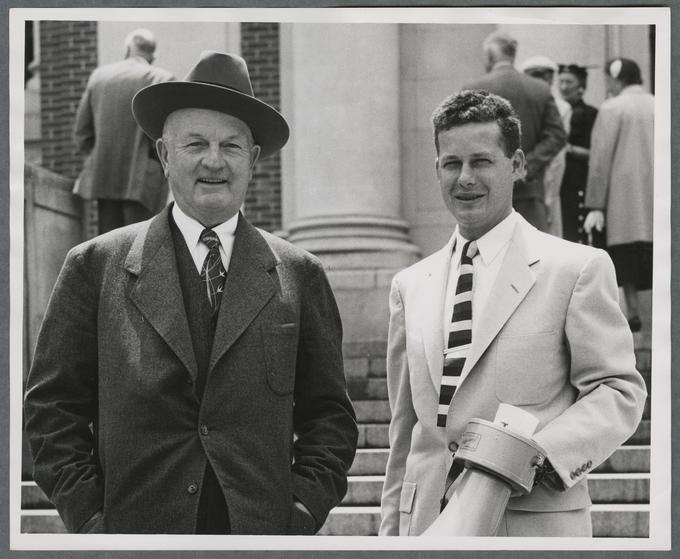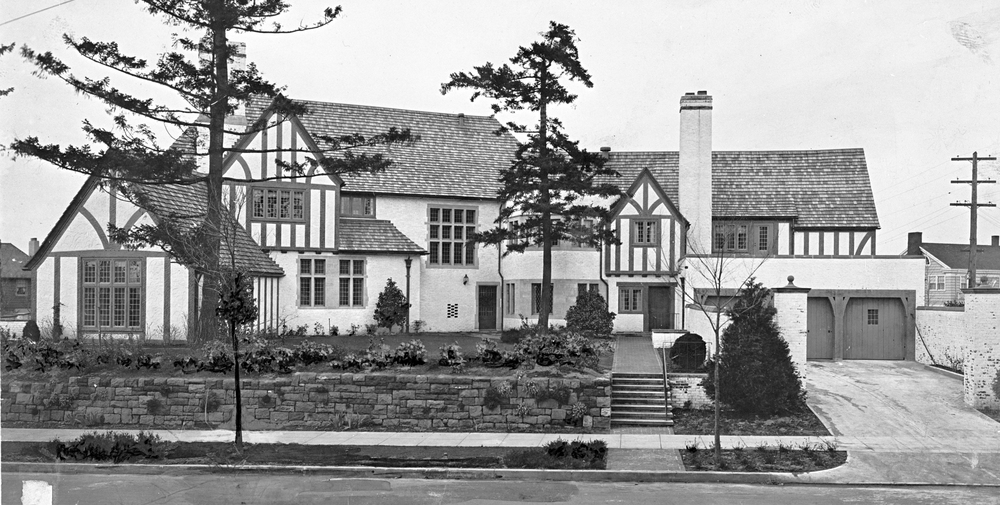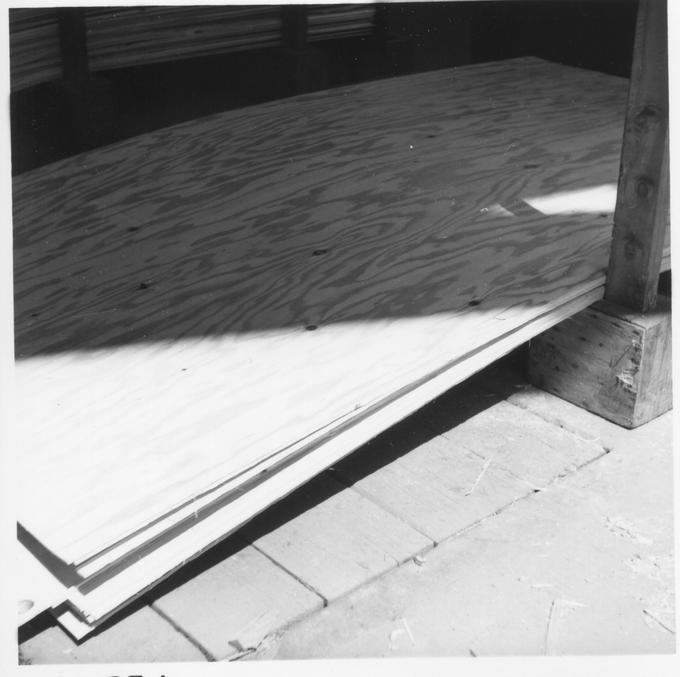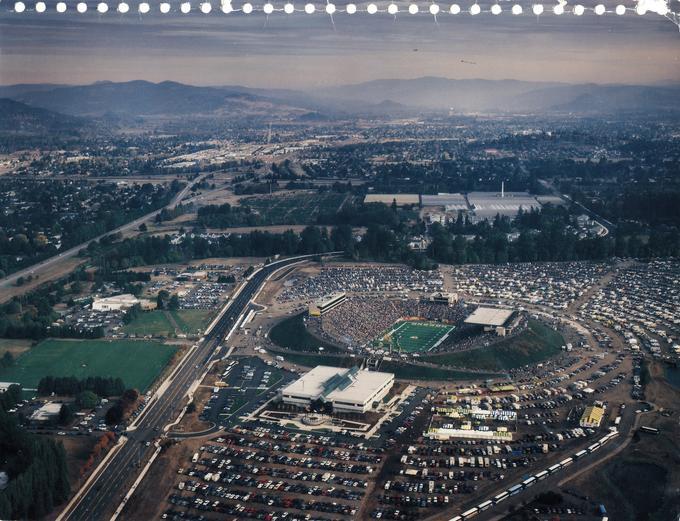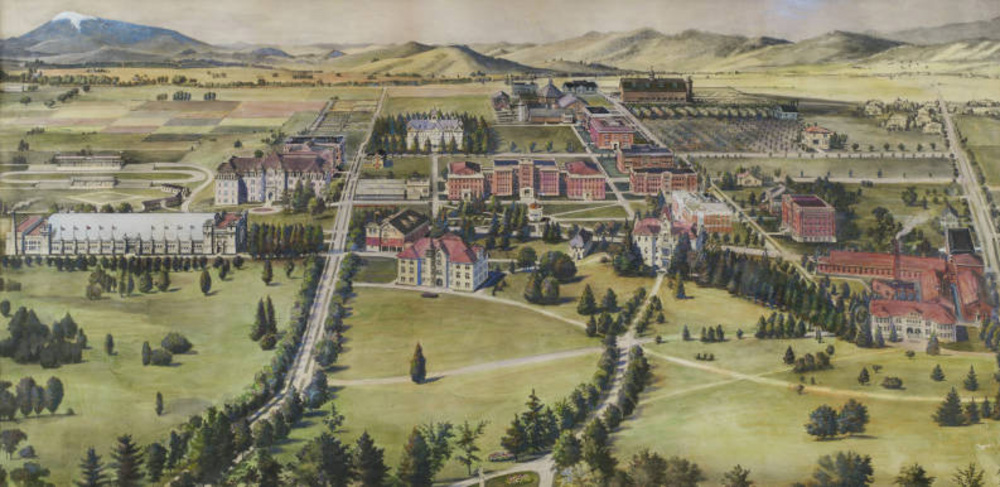You might say that Autzen Stadium at the University of Oregon owes its name to plywood. It is named in honor of Thomas John Autzen, a second-generation Portland lumberman who ushered in the age of plywood.
Born on June 30, 1888, Autzen grew up in Hoquiam, Washington. His father, Peter Autzen (1854-1918), was a logger who had emigrated from Denmark. In 1902, Peter Autzen bought into the newly incorporated Portland Manufacturing Company, a box and barrel maker. Peter Autzen remained in Hoquiam, and the company was run by Gustav Carlson, one of the former owners. Young Tom began working for the company in 1903. He soon became Oregon’s first plywood salesman.
The 1905 Lewis and Clark Exposition was a turning point for the company. Like other Oregon businesses, Portland Manufacturing wanted to showcase its products at the fair. It did so by making three-ply veneer wood panels from Pacific Northwest Douglas-fir, the first plywood manufactured with softwood species. Thomas Autzen was in charge of showing the wood at the Exposition, where he brought the plywood to attention of door and cabinet manufacturers. He persuaded them that the company's new product was a less expensive alternative to the materials they were using.
From 1905 to 1909, Thomas Autzen attended Oregon Agricultural College (later Oregon State University), where he studied electrical engineering. As Autzen finished college and entered the family business, plywood as a product was taking off.
Peter Autzen modernized the company's production facilities with automatic glue spreaders, sectional presses, and trimming saws. He also became a partner in the Nicolia Door Company. After a fire in the company's building in 1910, Thomas Autzen was instrumental in persuading his father to rebuild. The rebuilt Portland Manufacturing facility, in the St. John’s area of Portland, became a state-of-the-art manufacturing plant.
When Peter Autzen died in an automobile accident in 1918, Thomas Autzen took over the business. With his fraternity brother Jack Lingaas as sales manager, Portland Manufacturing continued to thrive, producing door and paneling, drawer bottoms, running boards and automobile body stock, and panels for home construction.
Plywood was in demand for doors, drawers, automobiles, and wall panels. As the demand for plywood soared in the 1920s Autzen and others experimented with various business plans, including a short-lived sales cooperative and a merger that resulted in the Oregon-Washington Plywood Company, which lasted just a year. During the Depression, Autzen leased his plant to the M and M Wood Working Company under a profit-sharing arrangement.
Thomas J. Autzen died in 1958 a wealthy man. In the early 1950s, he had established the Autzen Foundation, with his son Thomas Edward Autzen as president. That’s where the connection to Autzen Stadium comes in. Born in 1918, Thomas E. Autzen was a 1943 graduate of the University of Oregon. He worked for about a decade for Portland Manufacturing but then devoted most of his time and energy to philanthropy. In the 1960s, the Autzen Foundation donated $250,000 to help build a new stadium at the University of Oregon, by far the largest donation to the project. In 1966, the State Board of Higher Education named the stadium the Thomas J. Autzen Stadium.
Thomas Edward Autzen was president of the University of Oregon Foundation from 1966 to 1973, and on the boards of many other Oregon nonprofit organizations. He died in 1997 after heading the family foundation for more than four decades.
-
![]()
Thomas J. Autzen, 1909.
Courtesy Oregon State University Libraries
-
![]()
Thomas Autzen (left) and Bob Knoll, at OSU, c.1950.
Courtesy Oregon State University Libraries
-
![]()
Thomas J. Autzen house, NE Alameda Dr., Portland.
Oreg. Hist. Soc. Research Lib., CN 019272
-
![]()
Plywood sheets, Oregon State University, 2013.
Courtesy Oregon State University Libraries, Siuslaw National Forest coll.
-
![]()
Autzen Stadium, University of Oregon, Eugene, 1992.
Courtesy University of Oregon Libraries
Related Entries
-
![Autzen House]()
Autzen House
The Thomas J. Autzen house, built in 1927, is a rambling brick-and-ston…
-
![Oregon State University]()
Oregon State University
Oregon State University (OSU) traces its roots to 1856, when Corvallis …
Map This on the Oregon History WayFinder
The Oregon History Wayfinder is an interactive map that identifies significant places, people, and events in Oregon history.
Further Reading
Autzen Notebooks. http://scarc.library.oregonstate.edu/findingaids/index.php?p=collections/findingaid&id=712&q=Autzen+Notebook
Plywood in Retrospect: Portland Manufacturing Company. Tacoma: Plywood Pioneers Association, 1967.
https://www.apawood.org/data/Sites/1/documents/monographs/1-portland-manufacturing-co.pdf



